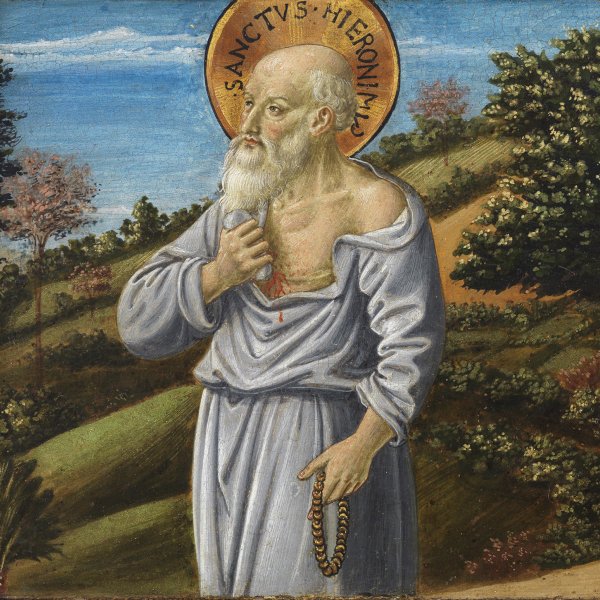Benozzo Gozzoli
Florence, ca. 1420/22 -Pistoia, 1497
Benozzo Gozzoli was one of the most prolific and popular Italian painters of the 15th century. His family was from Sant’Ilario a Colombaia on the outskirts of Florence. Active in Tuscany, Umbria and Rome, it is not known with whom he trained, although he seems to have first worked as a goldsmith and later as a painter with Fra Angelico. Gozzoli’s style reveals the marked influence of painters such as Domenico Veneziano, Filippo Lippi, Pesellino and Fra Angelico and he worked with the latter between 1440 and 1445 on the decoration of the monastery of San Marco in Florence. In 1439 Gozzoli was already established as an independent master and in 1445 he worked with Lorenzo Ghiberti and his brother on the Baptistery doors in Florence. Two years later the artist travelled to Rome to assist Fran Angelico in the Vatican. Dating from the 1440s is the panel of Saint Ursula with two Angels and a Donor (National Gallery of Art, Washington). His first signed and dated work is the Virgin and Child enthroned for the church of Montefalco in Umbria. In 1450 the artist was in Perugia and Viterbo. Nine years later he began his masterpiece, the frescoes for the chapel in the Medici-Riccardi palace in Florence, commissioned by Piero de’Medici. This scheme reflects his patron’s taste for rich colours such as scarlet, gold and blue. Gozzoli frequently introduced portraits of contemporary figures into his works and The Procession of the Three Kings in this scheme includes portraits of members of the Medici family as well as a self-portrait. Due to his notable popularity, Gozzoli received numerous commissions and was obliged to set up a workshop with various assistants. His most ambitious scheme was the fresco cycle in the Camposanto, Pisa (destroyed in World War II). The last years of his life were spent in Pisa, Florence and Pistoia. Most of Gozzoli’s work is in fresco but he also painted easel paintings, generally in tempera. Gozzoli died on 4 October 1497 and was buried in the church of the monastery of San Domenico.





